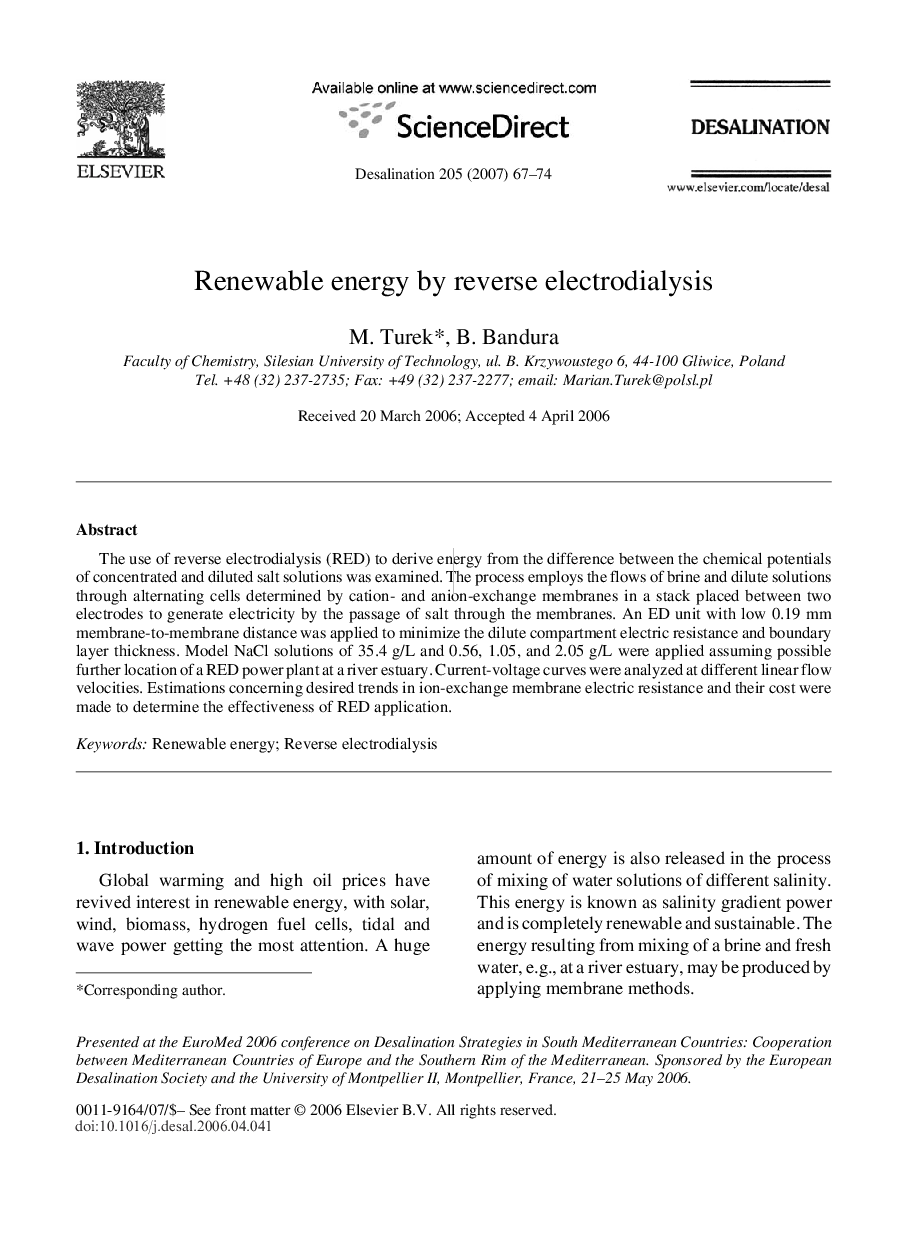| Article ID | Journal | Published Year | Pages | File Type |
|---|---|---|---|---|
| 628335 | Desalination | 2007 | 8 Pages |
The use of reverse electrodialysis (RED) to derive energy from the difference between the chemical potentials of concentrated and diluted salt solutions was examined. The process employs the flows of brine and dilute solutions through alternating cells determined by cation- and anion-exchange membranes in a stack placed between two electrodes to generate electricity by the passage of salt through the membranes. An ED unit with low 0.19 mm membrane-to-membrane distance was applied to minimize the dilute compartment electric resistance and boundary layer thickness. Model NaCl solutions of 35.4 g/L and 0.56, 1.05, and 2.05 g/L were applied assuming possible further location of a RED power plant at a river estuary. Current-voltage curves were analyzed at different linear flow velocities. Estimations concerning desired trends in ion-exchange membrane electric resistance and their cost were made to determine the effectiveness of RED application.
